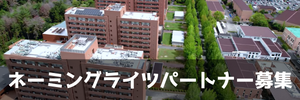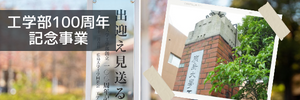(English announcement can be found in the latter half of this notice.)
広島大学バイオマスプロジェクト研究センターと中国地域バイオマス利用研究会の共催で広島大学バイオマスイブニングセミナーを開催しています。バイオマスに関する基本的な考え方から最先端の情報までをカバーして、この地域におけるバイオマスの活動に資することを目的とするものです。第62回を以下の日程で開催しますので、ご参集下さい。
日時 2018年3月2日(金)16:20~17:50
会場 広島大学東広島キャンパス工学部110講義室
https://www.hiroshima-u.ac.jp/eng/access/lectureroom
https://www.hiroshima-u.ac.jp/eng/access/building
https://www.hiroshima-u.ac.jp/access/higashihiroshima
プログラム
解説 広島大学大学院工学研究科 教授 松村 幸彦
講演 広島大学大学院工学研究科 M2 伊藤 大志
「水熱前処理におけるコンブ細胞および有機物の挙動」
コンブはマンニトールやアルギン酸など発酵可能糖を含む再生可能エネルギー資源として有用な物質です。しかしこのような有機物の多くはコンブの細胞内または細胞壁に含まれています。水熱前処理は細胞構造を破壊し有機物を取り出すことができます。コンブから適当に有機物を取り出すためには、コンブ細胞がどのような水熱条件下で破壊されるかの知見を得ることは重要です。しかし上記のような研究は未だ報告されていません。本研究ではコンブを、連続式試験装置を用いて水熱前処理しました。圧力、滞留時間は5 MPa、10分で固定し温度を110℃から190℃で変化させました。回収サンプルのうち液相は全有機炭素(TOC)分析、固相は光学顕微鏡を用いて観察しました。水熱前処理後、TOCの値は130℃において上昇しました。固体観察においても130℃における処理物のサンプルの細胞が破壊されていることが確認できました。以上の結果から、コンブの水熱前処理において130℃、5 MPa、滞留時間10分の条件はコンブ内の有機物を取り出すのに有効であることが確認できました。
講演 広島大学工学部 B4 黒木 睦美
1.「キャピラリー管を用いた水熱条件下からの直接サンプリングの検討」
近年、エネルギー需要の増加に伴い、化石燃料の枯渇や地球温暖化が深刻な課題となっています。それゆえ、化石燃料の代替となる再生可能エネルギー源に注目が集まっています。中でも有望視されているのがバイオマスで、特に、非可食部バイオマスから作られた第二世代バイオエタノールが注目されています。しかし、現段階では収率が低く実用化には至っていません。収率をあげるためには高性能の前処理による処理効率の改善が必要ですが、そのためには、短時間に高温で反応場に存在する他の化合物を検出することが重要です。本研究では、キャピラリー菅を用いて水熱条件下でそのような化合物を検出することができる反応場質量(in situ MS)分析システムを開発しています。質量分析に必要な真空圧力まで減圧させ、分析を行うことに成功しました。キャピラリー菅を長くすることにより、より高圧の状態での分析も可能になると考えています。
2.「質量分析法による熱水分解グルコース分解物の定量」
キャピラリーチューブを用いたin-situ質量分析(in situ MS)分析法を初めて開発しました。 In situMS分析は、管状反応器を四重極質量分析器とステンレスキャピラリー管を介して連結することによって行いました。 グルコース分解の生成物をin situ MSにより調べました。 120℃で実験を行い、反応時間は5,10,20分でした。 減圧が成功し、MS分析が行われました。 キャピラリーを長くすることにより、この研究で使用されているよりも高い圧力下での反応にin situ MSを適用すべきです。
講演 広島大学大学院工学研究科 M2 五藤 聡
「超臨界水ガス化反応器に対するスラリー供給に関する考察」
水分を多量に含む含水系バイオマスは処理方法の更なる効率化が求められています。そこで超臨界水ガス化が提案されていますが、実験を行うにあたってスラリー状の含水性バイオマスを均一に反応器に供給する手段は未だ確立されていません。スラリー状の試料を用いた研究は多くなされていますが、その試料の撹拌・供給の過程を正確に記述しているものは見られず、物質収支が報告されていないため、適切な供給方法の確立が求められます。 そこで本研究では、スラリー状の試料の供給システムの検討を行いました。
司会 広島大学大学院工学研究科 博士研究員 Nattacha PAKSUNG
なお、18:00より意見交換会(参加費 800円)を開催します。ご都合の付く方はこちらにもご参加下さい。
The 62nd Hiroshima University Biomass Evening Seminar
(The29th Hiroshima University ACE Seminar)
Biomass Project Research Center, Hiroshima University, and HOSTY Association are co-organizing the Hiroshima University Biomass Evening Seminar. This seminar covers topics from the fundamentals of biomass to the latest information so that it can contribute the activities on biomass in this district. The 62nd seminar will be held as follows. Please join.
Date & Time: Fri .2 Mar., 2018 16:20-17:50
Place: Engineering 110 Lecture Room, Higashi-Hiroshima Campus, Hiroshima University
https://www.hiroshima-u.ac.jp/eng/access/lectureroom
https://www.hiroshima-u.ac.jp/eng/access/building
https://www.hiroshima-u.ac.jp/access/higashihiroshima
Program
Commentary: Yukihiko MATSUMURA
Professor, Graduate School of Engineering, Hiroshima University
Lecture: Hiroshi ITO
M2 Student,Graduate School of Engineering, Hiroshima University
“Behavior of Organic Compounds and Kelp Cell during Hydrothermal Pretreatment”
Kelp is known as usable resource for renewable energy because it includes fermentable sugar which are alginic acid and mannitol. However, most of the organic matter exist inside the cell membrane. Hydrothermal process can break the cell structure and make this organic matter released. To make the best of the organic matter, the condition to make this release take place should be elucidated. However, it is yet to be decided. The purpose of this study is to indicate the condition where cells of kelp break under hydrothermal pretreatment. In this research, kelp was treated by continuous flow reactor under hydrothermal condition. The experimental condition, temperature was varied from 110 to 190 ℃, pressure was fixed at 5 MPa, and residence time was set at 10 min.The carbon recovery yield in liquid phase was measured using total organic carbon (TOC) analyzer. The state of kelp cell was observed using optical microscope. After hydrothermal pretreatment, the TOC value increaced when treatment temperature is higher than 130 ℃. Observation by the optical microscope confirmed that cell wall of kelp was destroyed at 130 ℃. This results suggests that hydrothermal pretreatment at 130 ℃, 10 min and 5 MPa in hydrothermal pretreatment of kelp is effective for releasing organic matter.
Lecture: Mutsumi KUROKI
B4 Student, School of Engineering, Hiroshima University
1."Examination of direct sampling from hydrothermal conditions using a capillary tube"
We developed an in situ mass spectrometry (in situ MS) analysis method using capillary tube for the first time. The in situ MS analysis was performed by coupling a tubular batch reactor with a quadrupole mass analyzer via custom-built connection fittings. The products of glucose decomposition were investigated by in situ MS. We conducted experiment at 120℃ and reaction time is 5, 10, 20 minutes. Pressure reduction was successfully made, and MS analysis was conducted. By making the capillary longer, in situ MS should be applied to reactions under pressure higher than that employed in this study.
2. "Determination of Hydrothermal Glucose Decomposition Products Using Mass Spectrometry"
We developed an in situ mass spectrometry (in situ MS) analysis method using capillary tube for the first time. The in situ MS analysis was performed by coupling a tubular reactor with a quadrupole mass analyzer via stainless capillary tube. The products of glucose decomposition were investigated by in situ MS. We conducted experiment at 120ºC and reaction time was 5, 10 and 20 min. Pressure reduction was successfully made, and MS analysis was conducted. By making the capillary longer, in situ MS should be applied to reactions under pressure higher than that employed in this study.
Lecture: Satoshi GOTO
M2 Student,Graduate School of Engineering, Hiroshima University
“Discussion on slurry feeding for supercritical water gasification reactor”
Recently biomass energy is attracting attention, but utilization method for wet biomass Can be still developed. Supercritical water gasification is effective to convert wet biomass slurry feedstock into the energy because of water with high reactivity. When such slurry feedstock is used for this gasification, slurry feeder is needed. However there is no solid procedure for feeding slurry and mass balance in many researches are not well closed. That is why this research is focusing on establishing slurry feeder and making sure key parameters of mixing slurry materials. High pressure container was made for this research and the evaluation of this feeder was conducted by the recovery rate with changing the agitation rate, the amount of feedstock and the distance between the plate and the feedstock. In this research, shochu residue and activated carbon was used as slurry feedstock.
Chair: Nattacha PAKSUNG
Researcher , Graduate School of Engineering, Hiroshima University
We will hold the discussion meeting from 18:00 (800 JPY needed). Join this meeting, too if you are available.


 Home
Home









